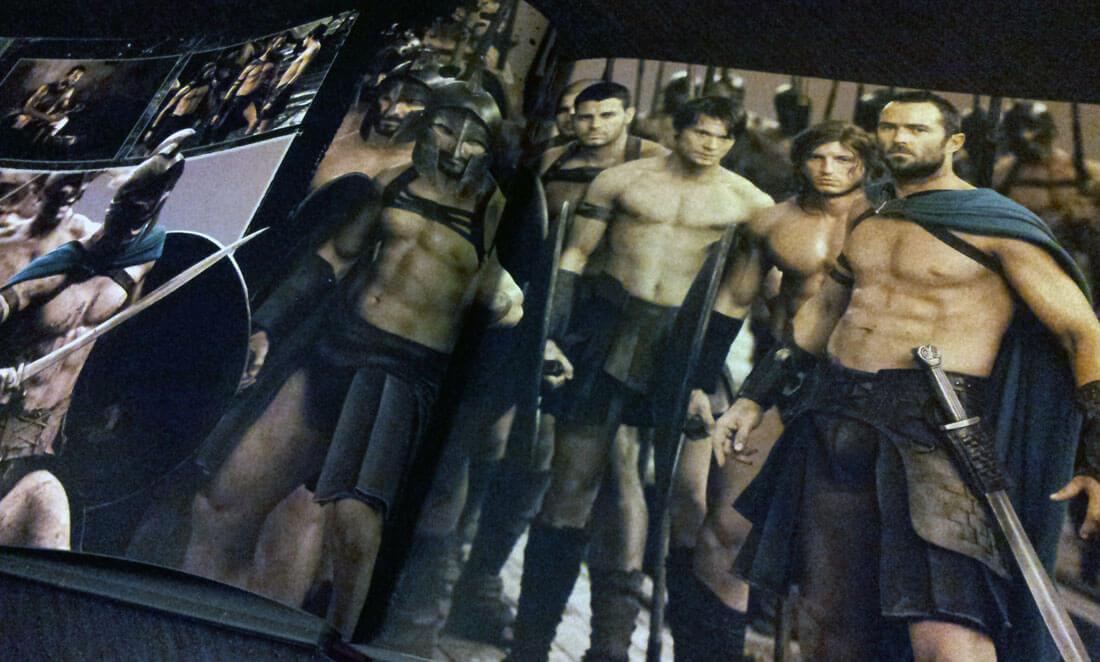‘300: Rise of an Empire – The Art of the Film’ Review
Posted 6 years ago by Rob Lammle Books

Whether you like it or not, Zack Snyder’s 300 is a film that’s pretty hard to forget. Between it’s innovative use of green screen, it’s multi-speed camerawork, and it’s washed out color palette, it’s instantly recognizable and influential even 8 years after its 2006 debut. But for anyone who has seen the film – or knows their history book – they might have been surprised when a sequel, 300: Rise of an Empire, was announced for 2014.
The concept behind the sequel is that it’s a parallel story, choosing to make the tale of the 300 Spartans just one chapter in a longer epic, with many of the events occurring around the same time as the original film. But this time around, the focus is on naval battles in the time of Ancient Greece, which brings with it a set of unique visuals that the producers hope will excite us as much as the first film’s groundbreaking style. To help further that goal, Titan Books is releasing 300: Rise of an Empire – The Art of the Film.
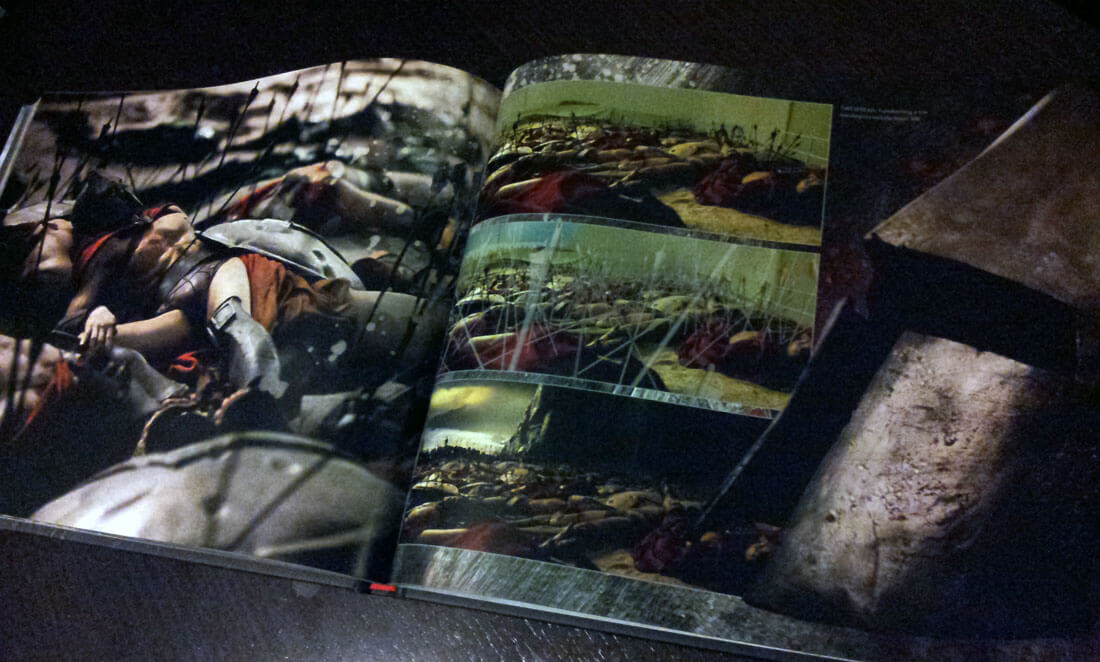
While the title of the book says it’s the art of the film, the final product is really more a making of the film, which seems like a good idea considering there are so many new characters and conflicts to introduce. The first 50 pages are mainly photographs of the key actors in pre-production training, in-costume, perhaps a few behind-the-scenes candids, and then photos from the actual production, usually with them in full-on ass kicking mode. There’s only a small snippet of text to introduce the characters and try to give us a glimpse inside their personalities and motivations, leaving most of the next few pages to focus on their visual presence. And focus on the visuals they do indeed. He-Man would be jealous of how buff and sculpted these gladiators are wearing little more than fur underwear and a cape. I had to hide this book from my wife until I was finished with this review, fearing I’d never see it – or her – ever again. Beefcake aside, the photographs are generally stunning, adhering to the distinct 300 look that you expect.
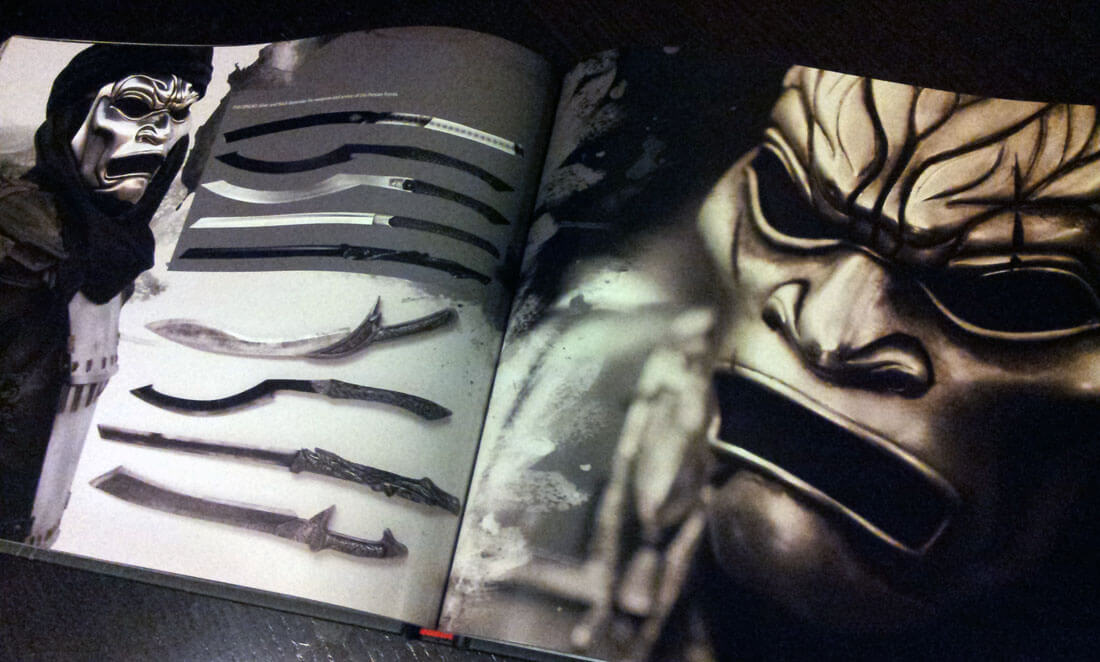
Once the players are introduced, concept art takes up nearly 100 pages of the book. With an emphasis on naval battles, there are plenty of highly-detailed paintings, drawings, photographs, and 3D renderings of Grecian longships, each with a distinct design, separated into the major battles featured in the film. But you’ll also find lush palace interiors, monolithic temple exteriors, beautiful statues, crazy looking weapons, and a handful of costume designs. Mixed in are behind-the-scenes photos of special effects, both practical and digital, to give us an even more in-depth look at the process of bringing Ancient Greece back to life. Finally, to round it all up, the last 20 or so pages are more publicity photos of beautiful, buff people wielding swords, spears, and bloody battle scars.
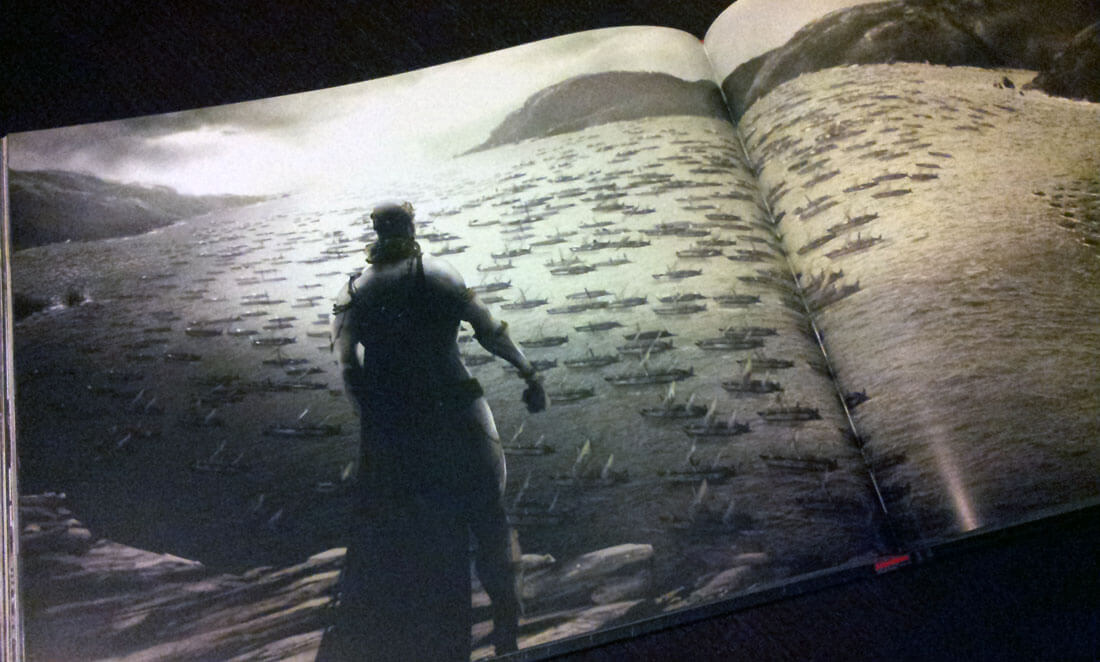
I can’t say whether or not 300: Rise of an Empire is going to be a good movie, but I can say that, based upon this book, a lot of thought and passion has gone into the visuals of the film. Yes, much of it looks similar to the design of 300, but considering this story is taking place in the same time and place, that makes sense. Plus, it will keep a cohesive feel between the two films and, who knows, maybe a third entry in franchise. But there’s enough new stuff here, too, to make this book – and probably the film – worth a look. If you’re a fan of the 300 aesthetic, there’s no reason you won’t find 300: Rise of an Empire – The Art of the Film a safe purchase.
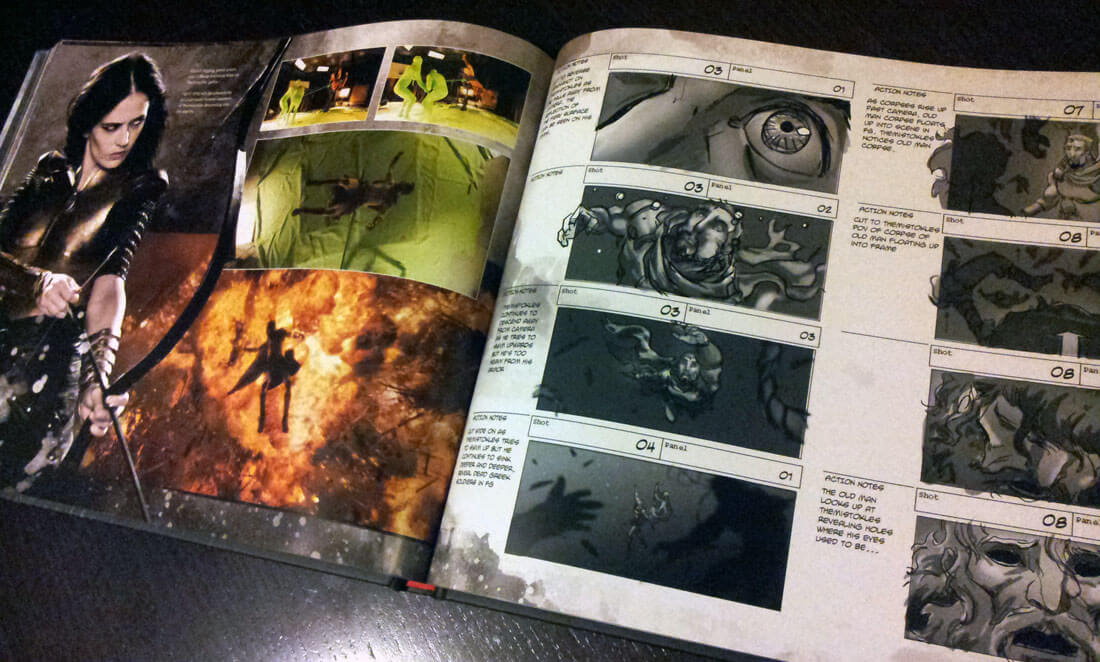
300: Rise of an Empire – The Art of the Film is available at Amazon and other fine book retailers.
300: Rise of an Empire opens March 7 nationwide.
